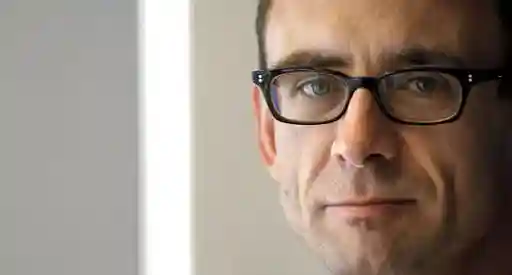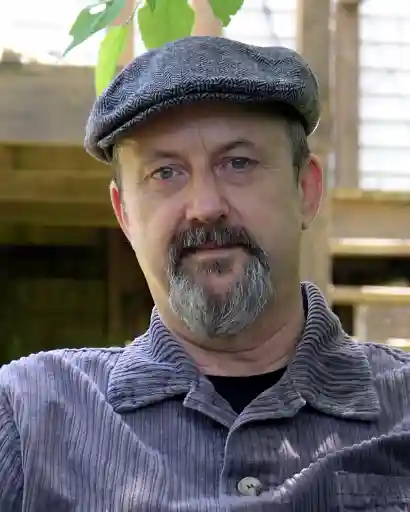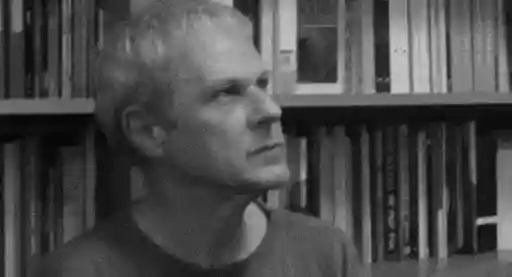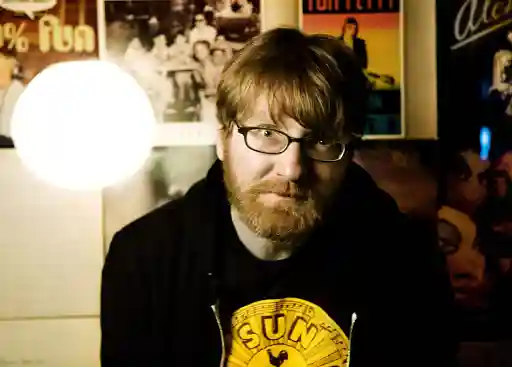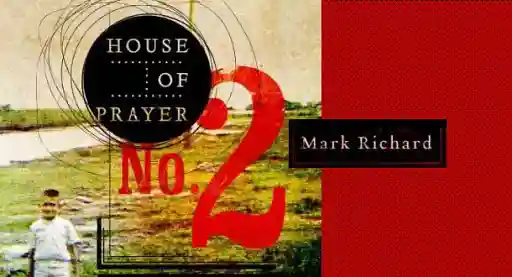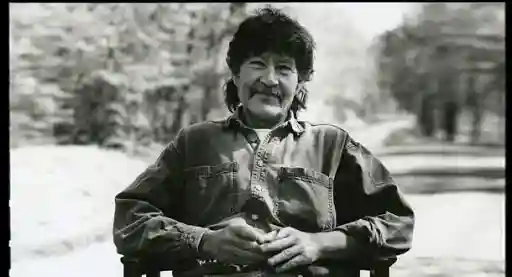Photo via author website
Rebecca van Laer’s hybrid novella, How to Adjust to the Dark, begins with former poet Charlotte reading through the poems she wrote in her 20s and reflecting on her coming-of-age as a person and a writer. It’s a fascinating project of literary self-criticism that sees Charlotte analyze how each poem came to be, what it was trying to say, and what it actually ended up saying, finally reading between the lines of her own character development.
I was captivated by the thoughtfulness of this book, its kinship to Maggie Nelson’s Bluets, and its meta-textual portrayal of the experience of being a writer — or someone concerned with writing ‘well’ or ‘enough.’ Though the novella accomplishes many things I admire (a compelling narrative voice, a satisfying arc, intriguing theoretical framing), I loved it most for its ability to engage with feeling honestly and unpretentiously.
I’m grateful to Rebecca for making time to chat about the various aspects of the writing experience explored in her book.
There’s always self-consciousness in the process of reading your own writing, as Charlotte’s experience shows. Do you think time turns this into a writerly wisdom that helps you develop your craft, or is re-encountering your own work just an unhelpful way to worry too much about the parts of yourself you are revealing publicly?
There’s definitely discomfort there, but there’s also a gift in seeing the distance between your selves, and in particular how you could now solve not just the personal problems, but the artistic problems your younger self is circling around. You look back at your own writing and think “I should have gotten out of that relationship that made me write all those depressing poems earlier” — but you can also think in terms of what you were trying to achieve and find a way to do it better. That’s the valuable part of going back to old writing: finding the artistic solutions to problems you were grappling with and taking those forward into new projects.
When Charlotte looks back at her own poems, she’s quite harsh. She deflates the idea of a poem: tells us how she wanted her professors to conclude certain things about her, or she visualized a poem being read in front of a crush, or she was going to share a poem with a partner so the poem was trying to communicate something… The scaffolding around a poem’s creation isn’t invisible, like she believes she’s manipulating people into thinking she’s a real writer. Is it possible to encounter old writing without the voice of this inner critic?
When I was writing this book —which contains my own real poetry — the voice of the inner critic was loud, especially since I’d switched genres and started writing prose. “I can’t write poetry anymore” turned into “I actually could never write poetry.” Charlotte’s self-criticism in the book is an exaggerated version of how I viewed my own writing. I told myself that I was always trying to achieve an interpersonal end through written or textual means. Ultimately, I think that’s too critical.
So how can we look back without that voice of the inner critic? The book is an analytic project, and the goal is to uncover something, get to the truth of something, or to cut everything away until only what’s of value remains. But there are other ways to look back. I wrote the bulk of How to Adjust to the Dark in 2015-2016, and five or six years later, I can very happily return to it, not thinking that it’s trash. I think time, age, and distance help you feel more tenderness towards earlier versions of yourself — and it’s something we all probably need to work on, having compassion for our child, adolescent, or adolescent writer selves.
Yes, I am basically asking you how to not be critical of yourself, which is probably impossible.
It’s funny. Sometimes you want to discover something brilliant in your younger self and then the same disappointment that you bring to your writing as an adult will be reflected back to you if your expectations are too high. So it might be a matter of setting kinder expectations for yourself, past and present.
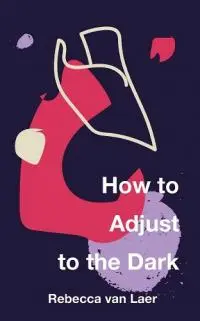 To return to the audiences Charlotte is conscious of as she’s writing and re-reading, I’m curious how conscious of an audience you were when you were writing this book. It felt to me like more of an inward space, like Charlotte looking back at Charlotte and not really concerned anymore with her readers. I’m also generally curious if you think that visualizing an audience can be helpful.
To return to the audiences Charlotte is conscious of as she’s writing and re-reading, I’m curious how conscious of an audience you were when you were writing this book. It felt to me like more of an inward space, like Charlotte looking back at Charlotte and not really concerned anymore with her readers. I’m also generally curious if you think that visualizing an audience can be helpful.
This book was kind of a special book for me, because I didn’t know if it was a book or not, and I wasn’t really thinking about the audience. From the beginning, I thought that if it was published, it would be a small press book (because of its hybrid nature), so I had a lot of freedom when I was writing it. I wasn’t thinking about how much money I would make, or even if it would be long enough to be a ‘real’ novel.
That was a special experience I haven’t been able to duplicate. In the books I’ve worked on since then, I’ve had a sense of the market, my comparable titles, who my reader is, and what I want to say to them. This is great from a marketing perspective, but it can also feel quite confining. With How to Adjust to the Dark, I really felt I could go in any direction. I recommend this to all writers: to work on a longer project without an eye towards commercial success. It’s especially helpful with projects of self-inquiry or exploration. Sheila Heti, for example, a writer I love very much, had this personal practice inspired by the I-Ching, flipping coins and keeping a personal journal, that ended up part of her novel Motherhood. There’s great value in starting from that place of personal exploration and writing without thinking about publication, at least sometimes.
I think that brings you to a really interesting space as a reader. You’re privy to something you can tell wasn’t written for you, and that’s really enjoyable. Just to think about writerly identity for a moment, I recall that at some point in your book, Charlotte says that when she hadn’t written for a while, she had to detach herself from that part of her identity, telling people she wasn’t a poet anymore. In a newsletter, George Saunders recently wrote that “even if you’re not actively writing because you’re too busy, you are still a writer, because of the way you regard the world — with curiosity and interest and some sort of love.” I wanted to contrast the two views. Charlotte’s opinion aside — what do you think?
I think what George Saunders says is absolutely true. It’s very much a way of regarding the world and looking for the meaning in experiences, and how that meaning can become something else. It can take the form of a story you tell a friend, or a story you tell yourself about a bird you see, without ever being written on the page.
In my book, the force with which Charlotte departs from her identity becomes a self-fulfilling prophecy and requires her to become something else: the writer of How to Adjust to the Dark. But dry spells are part of writing. Sometimes, it takes a really long time to refill your own well or hit on an idea that’s worth pursuing — that’s done out of obligation, habit, or a fear of losing your identity as a writer.
How do you refill the well?
Reading helps. In particular, reading things that are good, that I’m not reading because I have to review them or for market research purposes because they sound similar to my works-in-progress. Returning to beloved books, or books that can connect you to your love of literature. And beyond that, rest, self care, and gentle note-taking.
Since you mention rest — I noticed that whenever she’s struggling, Charlotte doubles down on working hard, which she applies to her writing routine, too. How do you feel about measuring writerly productivity, setting goals like writing a poem every day?
I had a boyfriend at one point who wrote a poem every day. You generate a lot of material and practice your skills that way, and for a long time I was envious of that, but I’m no longer interested in working on things that I don’t have faith in. At this point, I feel that my goal isn’t to have as much output as possible, but to make things that are good and that I care about.
Do you believe in writerly New Year’s resolutions? Are you setting any?
I don’t think I’m going to set any. There was a period in my life when manifestation was important to me and I liked to envision the year ahead — now, I’m more focused on what I can control, and I don’t think I can even control a resolution like ‘I will write four great short stories this year.’ I might be able to control ‘I will write four short stories this year,’ but if they’re all bad, why put yourself through it? I would say that for 2023, I would like to write a few short stories if I have good ideas, but if I don’t, I don’t have it in me to make myself write bad ones.
While we’re on the topic of writing badly — in your book, Charlotte abandons her novel-in-verse after a writing instructor isn’t impressed. Outside of writing programs, how do you know when it’s time to abandon a project? How do you value your own work?
It’s tough. You can ask other people all you want, but I don’t think most readers will ever say “throw it in the trash can, it’s of no use.” It’s a hard choice to make, there’s always the temptation to tinker or see what you can salvage. How do you really know if something is dead? I’ve said before that nothing is ever dead, and it might just be that you’ll return to it a long, long time in the future, but I think that if you feel dread when reading it, you should stop working on it.
Good rule, I think.
You can feel dread and still get encouragement from friends who think you should work on it, but I think you should listen to the dread.
What’s your favorite thing about writing?
The freedom to explore questions I have in my real life through fictional scenarios, people, and structures, and to answer them for myself. To go places that I’m not going to go in my real life, where I actually don’t want things to change that much, but to get to adventure and experiment and learn more about myself. In other words: a satiation of my own curiosity, and an expansion of my inner world.
How to Adjust to the Dark can be purchased from Long Day Press, your local indie bookstore, Bookshop.org, or Amazon.
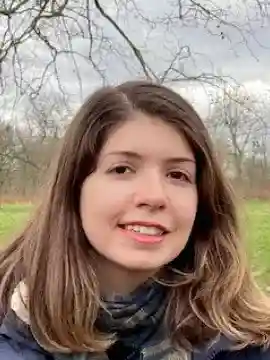
About the author
Kleopatra Olympiou is a writer from Cyprus. She writes for the Reedsy blog, and holds an MA in Creative Writing from Durham University.
